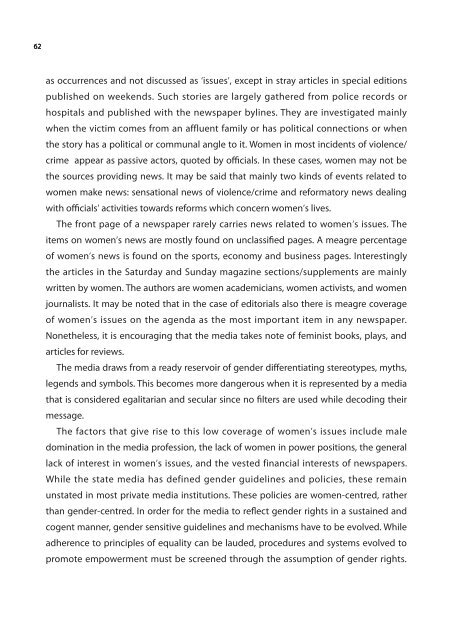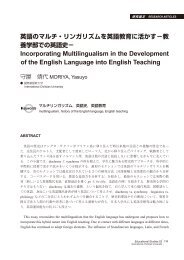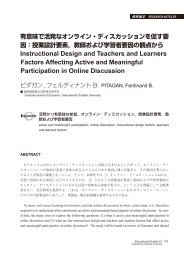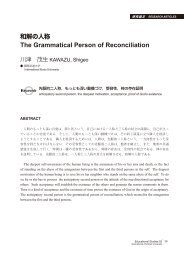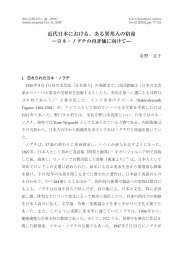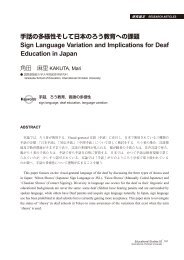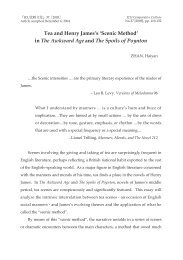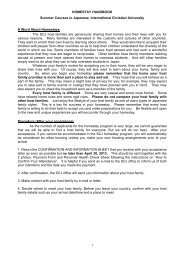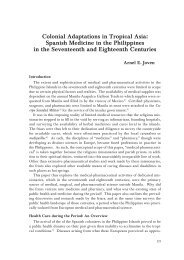Untitled - subsite - å½éåºç£æ大å¦
Untitled - subsite - å½éåºç£æ大å¦
Untitled - subsite - å½éåºç£æ大å¦
You also want an ePaper? Increase the reach of your titles
YUMPU automatically turns print PDFs into web optimized ePapers that Google loves.
62<br />
as occurrences and not discussed as issues, except in stray articles in special editions<br />
published on weekends. Such stories are largely gathered from police records or<br />
hospitals and published with the newspaper bylines. They are investigated mainly<br />
when the victim comes from an affluent family or has political connections or when<br />
the story has a political or communal angle to it. Women in most incidents of violence/<br />
crime appear as passive actors, quoted by officials. In these cases, women may not be<br />
the sources providing news. It may be said that mainly two kinds of events related to<br />
women make news: sensational news of violence/crime and reformatory news dealing<br />
with officials activities towards reforms which concern womens lives.<br />
The front page of a newspaper rarely carries news related to womens issues. The<br />
items on womens news are mostly found on unclassified pages. A meagre percentage<br />
of womens news is found on the sports, economy and business pages. Interestingly<br />
the articles in the Saturday and Sunday magazine sections/supplements are mainly<br />
written by women. The authors are women academicians, women activists, and women<br />
journalists. It may be noted that in the case of editorials also there is meagre coverage<br />
of womens issues on the agenda as the most important item in any newspaper.<br />
Nonetheless, it is encouraging that the media takes note of feminist books, plays, and<br />
articles for reviews.<br />
The media draws from a ready reservoir of gender differentiating stereotypes, myths,<br />
legends and symbols. This becomes more dangerous when it is represented by a media<br />
that is considered egalitarian and secular since no filters are used while decoding their<br />
message.<br />
The factors that give rise to this low coverage of womens issues include male<br />
domination in the media profession, the lack of women in power positions, the general<br />
lack of interest in womens issues, and the vested financial interests of newspapers.<br />
While the state media has defined gender guidelines and policies, these remain<br />
unstated in most private media institutions. These policies are women-centred, rather<br />
than gender-centred. In order for the media to reflect gender rights in a sustained and<br />
cogent manner, gender sensitive guidelines and mechanisms have to be evolved. While<br />
adherence to principles of equality can be lauded, procedures and systems evolved to<br />
promote empowerment must be screened through the assumption of gender rights.


